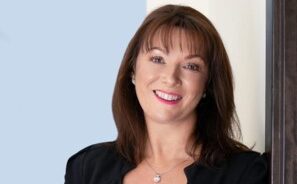Quaero’s European Smaller Companies Fund, co-managed by Philip Best and Marc Saint-Jean Webb, invests in Europe’s listed family-owned businesses, which the firm believes have a performance edge.
Keller cited data that shows since 2001, in Europe, the compound annual return for family-owned businesses has been 11.6% versus non-family-owned companies at 8.7%. Within the data, small and mid-cap family-owned had the highest outperformance.
He said some reasons for outperformance are that families tend to think long-term in “generations rather than quarters”. They also tend to be risk-averse and do not like debt.
“We go to family businesses because we believe they are safer,” Keller said. “We’re taking out an extra layer of risk.”
However, the optimal level of family control is around 40%, according to the firm’s research. As holdings exceed 40%, returns of family-owned businesses start to decrease. He added that the fund’s holdings have on average 20% family ownership.
Undervalued companies
The fund managers initially work with Europe’s total universe of roughly 5000 listed small caps. The family-owned filter is applied to narrow it down to about 1000.
A value investing approach is used to find undervalued stocks and the managers also meet the owners and management to eventually build a portfolio of 50-70 positions, Keller said.
Initially a small position (up to 5% of the portfolio) is taken and it can be increased as conviction rises. The buy-and-hold strategy translates into an average holding period of 3-4 years.
French, German, Swiss and Northern Italian small caps make up the bulk of the portfolio. The top two holdings are Spanish swimming pool equipment maker Fluidra and German construction equipment suppler Wacker Neuson, according to Morningstar.
Family fights
Family owned businesses are often unfairly maligned, Keller said. For example, infighting among family members over control happens in all companies.
“Everyone thinks internal fights are happening as a rule for every family business,” Keller said. “But in non-family businesses you have board fights. Deutsche Bank is a good example. Data shows that on average family businesses tend to be more stable.”
He believes a public listing goes a long way toward ending internal conflicts. “Typically listing is a point when you argue about price to get fair value. You have to find a buyer and the best way to maximise value is to float the company. You can keep the controlling stake or you can sell. Listing is a great price discovery mechanism.”
Another issue that is often raised is poor treatment of minority shareholders, Keller said. He believes there is no heightened risk specific to family-owned businesses.
He added, however, that when the family controls more than half of a business, the likelihood increases. “That’s probably because families start to feel they are the only owners and are not so nice to minority shareholders.
For the fund managers, red flags are excessive debt and management compensation, and they tend to be tied together, Keller said. They also keep an eye on management and board structure.
“We would worry if the CEO is also the owner and his wife is on the board. Board decisions may not be process-driven but in the interest of one person.
“Our preference would be professional management and a board with a large family presence to do the oversight and the supervisory work.”
Keller, who used to be an Asia equities portfolio manager, said in Asia the family structure works well despite the media coverage, which tends to focus on the negative.
However, Asia has more first generation owners and larger family-owned companies than Europe.
“The typical Asian family business is very large, [Hong Kong’s] Cheung Kong is a good example. My guess is that in Asia you’ll find on average a larger stake held by families than in Europe.”
Annualised returns of the fund vs benchmark and sector
| Three-year | Five-year | |
| European Smaller Companies Fund | 12.1% | 15.94% |
| MSCI Europe Small Cap NR EUR | 8.1% | 14.41% |
| Category – European Small Cap Equities | 10.03% | 14.61% |





